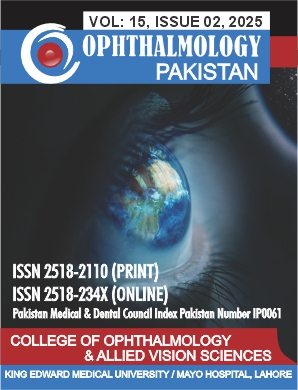Amblyopia Screening in Pakistan: A Public Health Review and Policy Perspective
DOI:
https://doi.org/10.62276/OphthalmolPak.15.02.196Keywords:
Amblyopia, Vision Screening, Pakistan, Pediatric Ophthalmology, Early DetectionAbstract
Amblyopia or “lazy eye” is a major cause of preventable eyesight deficit ailment in children aged 1-5 and accounting for 2-5% of the children’s population world over1. In Pakistan, where children under the age of 15 amount to 40% of the whole population2, it is largely inflated by the absence of reliable data and national screening programmes. Vision screening is vital at this stage because it is during this age when symptoms can be identified. A study found that self-perception of social acceptance was lower in children treated for amblyopia compared with age-matched controls3.
This article addresses issues and possibilities of commencing amblyopia screening programmes in Pakistan using successful models from foreign countries. Insufficient health care facilities and budgetary restrictions cripple the public healthcare system in Pakistan. However, recent advancements in amblyopia treatment including binocular therapy and pharmacological alternatives to traditional patching could enhance outcomes in low-resource settings like Pakistan4. With these measures in place, Pakistan’s growing rate of amblyopia will be controllable, and children’s visual health will positively develop.






